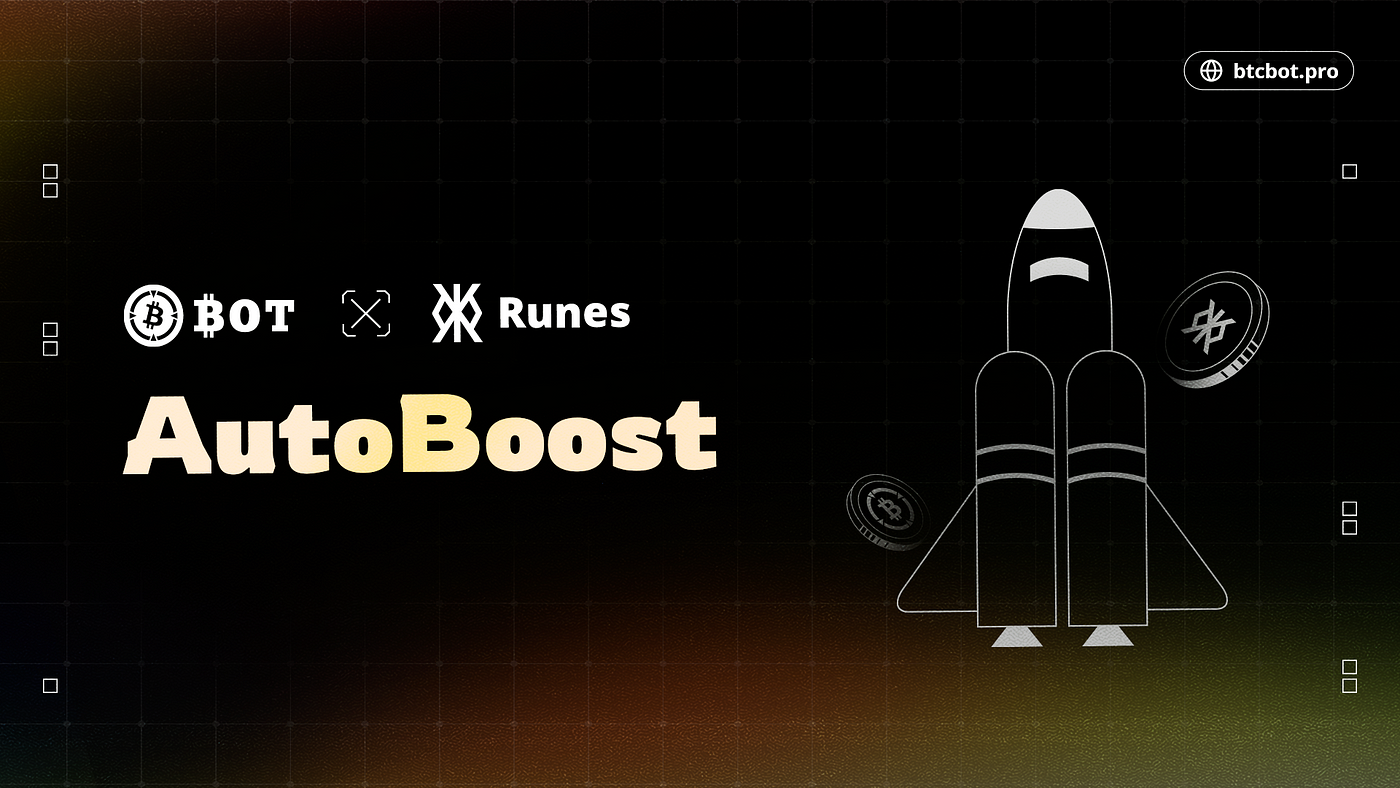BTCBot AutoBoost: Detailed Solution for Engraving Runes
Author: BTCBot Chinese
This article is reprinted from the BTCBot Chinese Community Medium: https://medium.com/btcbotcn/btcbot-autoboost-铭刻-runes-最佳解决方案-d9bb3c195bac

In the article "A New Type of Engraving Acceleration Scheme - Multi-Level Rapid Acceleration, Automatic Fuel Recovery," the new acceleration scheme of BTCBot.pro: Auto Boost is detailed. However, many non-technical friends still find it difficult to understand due to numerous technical details and mechanisms. Today, we will simplify the complex technical practices and explain the principles of BTCBot AutoBoost in layman's terms.
Whether it is BRC20 or the upcoming Runes, they all belong to the BTC Layer 1 protocol and can utilize BTCBot's AutoBoost feature. In fact, most mint platforms have related acceleration schemes for inscription or Runes, and the current traditional acceleration schemes are generally divided into three main categories: Pool Acceleration, RBF Acceleration, and CPFP Acceleration.
These three types of acceleration schemes can complete transaction acceleration, but they also have shortcomings. As basic knowledge of the industry, we can briefly understand them.
Three Traditional Acceleration Schemes
Pool Acceleration is when you have a transaction that is delayed due to relatively low gas fees. You pay a mining pool like Binance/f2pool to include your transaction in the next block they mine. For an important transaction without a time constraint, pool acceleration is a good solution. However, for BRC20/Runes minting, this scheme may often be inadequate because even if the mining pool has over 10% of the total BTC network's hash power, it cannot guarantee when a block will be mined. It may take 20 blocks for the pool to mine and include your transaction, but by then the entire mint process may have already reached 100%, and you won't receive the tokens. In other words, pool acceleration cannot guarantee that users will receive tokens, and gas fees cannot be refunded to users.
RBF (replace-by-fee) acceleration means covering the original transaction with a transaction that has a higher fee. When batch processing, the gas used for the covering transaction needs to be higher than that of the previously sent transactions. This means that each acceleration will at least double the gas fee, and with multiple accelerations, the gas fee will increase exponentially. Moreover, users do not know how much gas fee is sufficient, and sometimes, after paying a high gas fee, they still do not receive tokens, resulting in wasted gas fees.
CPFP (child-pay-for-parent) acceleration is a chained acceleration where the fee from a subsequent transaction raises the gas fee of both transactions. It is not a replacement but an increase, theoretically allowing for multiple accelerations. In the engraving scenario, this is a very practical acceleration scheme. The downside is that users manually add gas and cannot know how much gas fee to add or how many times to accelerate. If they fail to mint and do not receive tokens, the gas fee cannot be refunded, resulting in wasted gas fees.
The three different acceleration schemes face similar issues: high gas fee expenditure, no guarantee of success, and non-recoverable gas fees.
BTCBot's Efficient Acceleration Scheme: AutoBoost and Auto Cancel
BTCBot's AutoBoost is a significant optimization based on CPFP: it monitors the BTC blockchain's mempool every 10 seconds, strictly tracking the gas prices of all transactions in the current mempool. If necessary, each transaction can be automatically accelerated up to 5 times within a single block—this is also why it is called "AutoBoost."
Based on data backtesting, using the BTCBot AutoBoost scheme, the on-chain rate of users minting Runes/BRC20 in the next block is as high as 99%. Moreover, since the gas fee is monitored based on on-chain data and gas is added intelligently and gradually, the addition of gas fees is very efficient, saving costs and significantly increasing the success rate of minting. To mint more quickly and ensure on-chain success, it is also very simple: open multiple wallets in BTCBot and mint simultaneously. For example, if a user wants to mint 1,000 Runes, they can split it into 10 wallets and mint at the same time.
Under the AutoBoost mechanism, BTCBot will automatically monitor the progress. If the minting process of a certain token has reached 100%, it will automatically stop minting and refund all remaining gas fees back to the user's address—this is an extremely important feature for users. No matter how close the minting progress is to 100%, users do not have to worry about losing gas fees.
The following is a summary table:

BTCBot will integrate with the Rune Protocol as soon as it goes live and support the AutoBoost feature. Players worldwide can easily mint, sniper, and trade Runes on Telegram with just a few clicks. BTCBot's AutoBoost scheme may be one of the best acceleration solutions currently available in the market.









